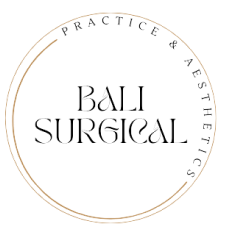In today’s world, the pursuit of a sculpted and toned physique is more prevalent than ever. With advances in medical science and technology, achieving the body of your dreams has become increasingly accessible. Two popular methods for body contouring are liposuction and tummy tucks, also known as abdominoplasty. These procedures can help individuals achieve the shape they desire, but they are not without risks and considerations.
Liposuction: The Art of Fat Removal
Liposuction is a surgical procedure designed to remove excess fat from specific areas of the body. It’s important to note that liposuction is not a weight loss procedure, but rather a way to reshape and contour the body. The science behind liposuction involves the following steps:
Anesthesia: Before the procedure begins, the patient is administered either local or general anesthesia to ensure they are comfortable and pain-free throughout the process.
Incision: Small incisions are made in the target area. These incisions are typically quite small, minimizing scarring.
Tumescent Solution: A tumescent solution, consisting of saline, a local anesthetic, and epinephrine, is injected into the target area. This solution helps reduce bleeding and makes it easier to remove fat.
Fat Removal: A cannula, a thin tube, is inserted through the incisions, and the surgeon carefully suctions out excess fat. The surgeon uses various techniques, such as traditional liposuction, ultrasound-assisted liposuction, or laser-assisted liposuction, to break down and remove fat cells.
Healing and Recovery: After the procedure, patients are advised to wear compression garments to minimize swelling and promote healing. Recovery time varies but typically involves a few weeks of rest and avoiding strenuous activities.
Tummy Tucks: Sculpting the Abdomen
A tummy tuck, or abdominoplasty, is a surgical procedure designed to remove excess skin and fat from the abdominal area and tighten the abdominal muscles. The science behind tummy tucks involves several key steps:
Anesthesia: Just like with liposuction, patients are administered anesthesia to ensure their comfort during the procedure.
Incision: A horizontal incision is made above the pubic bone. The length of the incision varies depending on the extent of the procedure.
Muscle Repair: The surgeon may repair and tighten the abdominal muscles if they have become separated or weakened, often due to pregnancy or significant weight loss.
Excess Skin Removal: Excess skin is removed, and the remaining skin is pulled down and sutured into place to create a smoother, firmer abdominal contour.
Navel Reconstruction: In some cases, the navel may need to be repositioned to maintain a natural appearance.
Recovery: Recovery from a tummy tuck can be more extensive than liposuction, with several weeks of limited physical activity and the use of compression garments to aid in healing.
Considerations and Risks
While both liposuction and tummy tucks can provide impressive results, they are not without risks and considerations. Some important factors to keep in mind include:
Individual Variation: Results can vary from person to person, and it’s crucial to have realistic expectations about what these procedures can achieve.
Scarring: Both procedures leave scars, although surgeons take care to minimize their visibility. Scarring may fade over time but is permanent.
Risks: Complications such as infection, bleeding, and adverse reactions to anesthesia can occur with any surgical procedure.
Recovery: Recovery can be demanding, and patients must be prepared for a period of limited physical activity and discomfort.
Consultation: It’s essential to consult with a board-certified plastic surgeon to determine which procedure is right for your specific goals and medical history.
Liposuction and tummy tucks are scientific advancements in the field of body contouring, offering individuals the opportunity to achieve their desired physique. Understanding the science behind these procedures and considering the associated risks and considerations is crucial when deciding if they are the right choice for you. Always consult with a qualified plastic surgeon to discuss your options and create a personalized treatment plan tailored to your needs and goals. Ultimately, with the right information and guidance, you can take steps towards achieving the body you’ve always wanted.
